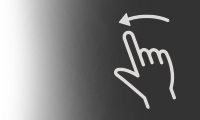Team orders have been part of Formula 1, and motorsport en general for ages. The main reason for dictating team orders is to avoid two drivers of the same team colliding together when fighting hard for positions, like Mark Webber and Sebastian Vettel of the Red Bull racing team did in Turkey earlier this season. But team orders are nothing new.
Back before WW II, Mercedes legendary team manager Alfred Neubauer masterminded a complex system of signals to send messages and instructions to his drivers, and in the 50s when he ran the Mercedes F1 team, it was always clear that Juan Manuel Fangio was the No. 1 driver.
Closer to us, Mario Andretti was the No. 1 driver at Team Lotus in 1978, and his teammate Ronnie Peterson was only allowed to win if Andretti had retired from the a race.
At the Grand Prix of Brazil in 1981, Carlos Reutemann was leading the race when Frank Williams decided this was enough and posted a pit board that read: “Jones P1 Reut P2”. Frank Wiliams wanted his No. 1 driver, Alan Jones to take the win and extend his lead in the standings. However. Reutemann never obeyed the order, and won the race. Alan Jones was fuming.
One year later at the French Grand Prix at the Paul Ricard circuit, the Renault team wanted their No. 1 driver, Alain Prost to capture victory. But his teammate René Arnoux was out in the lead.
The team posted a pit board that said: “Alain 1 René 2”. Arnoux was leading by some 15 seconds. He figured that he could not slow down enough in the final laps of the race to give the win to his ach rival. He kept his foot down and won the race. Prost was livid.
Earlier that same year, Gilles Villeneuve and Didier Pironi of the Ferrari team easily led the San Marino Grand Prix. Mauro Forghieri asked them not to attack each other to make sure Ferrari would collect a 1-2 sweep. The pit board read: “SLOW”. But in the closing laps, Pironi passed Villeneuve at full speed to snatch the win.
The angry Villeneuve lost his life a few weeks later in Belgium during the second qualifying session.
More recently, McLaren twice ordered David Coulthard to move over for Mika Häkkinen at Jerez in 1997 and then again in Australia the following year.
And then there was the well-documented Grand Prix of Austria 2002 when Jean Todt asked the leading Rubens Barrichello to let Michael Schumacher win the race. This is when the FIA decided to ban team orders.
Team orders are nothing new. There’s very little chance the FIA will be able to police them. There are million of different way a team can tell their drivers what they should do. One pit stop can last longer than another, or a driver may be asked to slow down to conserve fuel, for example…
Back before WW II, Mercedes legendary team manager Alfred Neubauer masterminded a complex system of signals to send messages and instructions to his drivers, and in the 50s when he ran the Mercedes F1 team, it was always clear that Juan Manuel Fangio was the No. 1 driver.
Closer to us, Mario Andretti was the No. 1 driver at Team Lotus in 1978, and his teammate Ronnie Peterson was only allowed to win if Andretti had retired from the a race.
 |
| Carlos Reutemann leading team Williams' No. 1 driver, Alan Jones (Photo: Williams) |
At the Grand Prix of Brazil in 1981, Carlos Reutemann was leading the race when Frank Williams decided this was enough and posted a pit board that read: “Jones P1 Reut P2”. Frank Wiliams wanted his No. 1 driver, Alan Jones to take the win and extend his lead in the standings. However. Reutemann never obeyed the order, and won the race. Alan Jones was fuming.
One year later at the French Grand Prix at the Paul Ricard circuit, the Renault team wanted their No. 1 driver, Alain Prost to capture victory. But his teammate René Arnoux was out in the lead.
 |
| Podium of the 1982 French GP with (l. to r.) Prost, Arnoux and Pironi. (Photo: WRI2) |
The team posted a pit board that said: “Alain 1 René 2”. Arnoux was leading by some 15 seconds. He figured that he could not slow down enough in the final laps of the race to give the win to his ach rival. He kept his foot down and won the race. Prost was livid.
Earlier that same year, Gilles Villeneuve and Didier Pironi of the Ferrari team easily led the San Marino Grand Prix. Mauro Forghieri asked them not to attack each other to make sure Ferrari would collect a 1-2 sweep. The pit board read: “SLOW”. But in the closing laps, Pironi passed Villeneuve at full speed to snatch the win.
The angry Villeneuve lost his life a few weeks later in Belgium during the second qualifying session.
More recently, McLaren twice ordered David Coulthard to move over for Mika Häkkinen at Jerez in 1997 and then again in Australia the following year.
 |
| Felipe Massa and Fernando Alonso, German GP 2010 (Photo: Ferrari) |
And then there was the well-documented Grand Prix of Austria 2002 when Jean Todt asked the leading Rubens Barrichello to let Michael Schumacher win the race. This is when the FIA decided to ban team orders.
Team orders are nothing new. There’s very little chance the FIA will be able to police them. There are million of different way a team can tell their drivers what they should do. One pit stop can last longer than another, or a driver may be asked to slow down to conserve fuel, for example…




